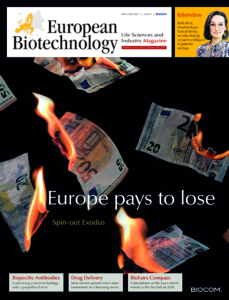Clinical trial disaster: report blames drug’s toxicity
An expert panel's final report on the fatal drug trial earlier this year in France states that the death of one of the participants was most likely caused by the drug's toxicity and not by any violation of the rules.
The drug’s toxicity most likely caused the death of one participant and the severe illnesses of five other volunteers treated during the drug trial in France, that is the result of the final report published by the French Agency for the Safety of Health Products (ANSM). However, the authors also criticised a lack of common sense in the proceedings.
During the phase I trial of the molecule BIA 10-2474, developed by Portuguese pharmaceutical company Bial and tested by the company’s French CRO partner Biotrial, rules "generally seem to have been respected", stated the final report’s lead author Bernard Begaud. However, the expert panel also revealed several inaccuracies, translation mistakes, and transcription errors in the documents submitted by Bial.
BIA 10-2474 aimed foremost at the treatment of pain, but also of anxiety or problems linked to degenerative diseases; it affects the Endocannabinoid system and blocks the enzyme FAAH.
During the trial, six doses (2.5 mg up to a maximum of 100 mg) would be tested on one group of volunteers. The scientists would then multiply the quantity by two each time a new dose was administered. Yet instead of 40mg, the 20 mg dosage was followed with a 50mg dosage. This sudden increase did not violate any national or international regulations, states the report, it lacked, however, common sense, since the risks were nonetheless higher at this dosage level.
When the participant who died afterwards showed atypical symptoms after reaching the 50 mg threshold, the scientists kept giving other participants the drug for several days, without connecting the symptoms to the drug trial and without waiting for MRI results. The expert panel concluded that it was likely that the drug gradually accumulated in the participant’s brains after they received the higher dose, thus only causing symptoms on the fifth day of the administration of a dose of 50mg and not in the volunteers who had received a single dose that was twice as strong. The experts assume that the drug’s poor ability to bind to its target FAAH was likely responsible for the problems.
Additionally, according to the report some of the participants should have been rejected as risk patients in the first place. The therapeutic benefit of BIA 10-2474 had been dubious from the start. What is more, there had been findings indicating that the enzyme FAAH already had been blocked completely at a level of 1,25 mg to 5 mg, so the dosage did not have to be raised up to 100 mg.
Still, the symptoms were most likely caused by the molecule itself, states the report: The symptoms presented by the volunteers can be linked to the BIA 10-2474 dose which they received daily and repeatedly [] The most credible hypothesis is that the molecule itself was toxic.
Bial has welcomed the findings, saying the report hadn’t identified any breach of current recommendations and regulations. The expert panel, however, concluded: The seriousness of the accident at Rennes justifies changes to the regulations and international best practice.



 Merck KGaA, Darmstadt Germany
Merck KGaA, Darmstadt Germany Cellular Origins Ltd
Cellular Origins Ltd